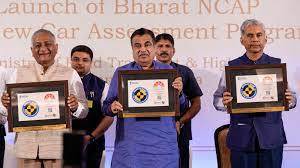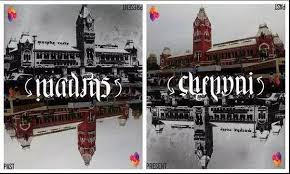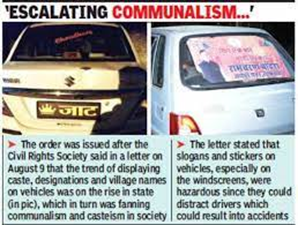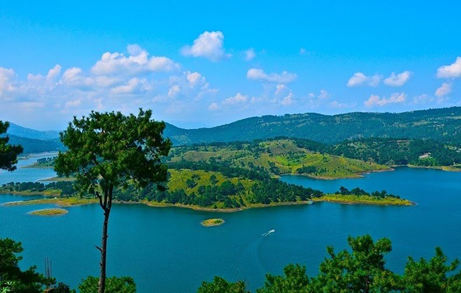todays current affairs 24th august 2023

Diamond Industry
GS Paper III (Economy)
Context: Surat, known as the diamond capital of India, is currently dealing with a disturbing upheaval in the diamond business. The formerly booming industry has been beset by job losses and terrible deaths.

Surat’s Diamond Dominance:
With more than 6,000 units cutting and polishing raw stones from worldwide, Surat, a city in Gujarat, is known for processing 90% of the world's diamonds.
The diamond business, which supports over a million artisans and labourers and generates an estimated Rs1.6 trillion or more in yearly income, makes a considerable economic contribution to India.
65% of India's gem and jewellery exports, or Rs1.76 trillion in 2022–2023, would be cut and polished diamonds.
Dark Clouds over Surat:
Nine people connected to the diamond industry have sadly committed suicide in the middle of the upheaval. As the industry struggles with a multidimensional issue, more than 20,000 individuals have lost their employment.
Due to fewer workdays, shorter workweeks, and unpaid summertime leave that may last up to a month for some employees, many workers have seen their wages drop by up to 30%.
The extravagant Diwali bonuses that were once a source of excitement for those working in the diamond sector are now just a distant memory.
Unraveling the Factors:
A decline in demand has been attributed to reductions in global consumer expenditure brought on by high interest rates in the US and Europe and a faltering Chinese economy.
Despite 2022–23 exports coming to Rs1.76 trillion (slightly less than the previous year), the demand for diamonds fell by roughly 30% in only three months.
Due to political unrest like the crisis in Ukraine, which accounts for around 35% of the supply of raw diamonds, limitations have been placed on Russian diamonds. The supply chain has been hampered by sanctions on major diamond miner Alrosa.
A big problem is the development of lab-grown diamonds, which are cheaper than their natural counterparts and are produced under controlled laboratory settings. These man-made jewels are gaining popularity and are 20% less expensive than comparable-sized real diamonds.
Conclusion:
The once-prosperous diamond industry of Surat is now at a turning point.
Its basis has been upended by the confluence of economic changes, geopolitical dynamics, and technological breakthroughs.
A robust and flexible approach is necessary as Surat negotiates this turbulent terrain to secure the industry's sustainability and viability in a shifting diamond market.
Source: The Hindu
Bharat NCAP
GS Paper III (Economy)
Context: India will begin its own Bharat New Car Assessment Programme (NCAP) for four-wheelers on October 1 in an effort to increase consumer awareness and make vehicles safer.

What is Bharat NCAP?
BNCAP is a safety evaluation programme for passenger cars that can seat up to eight passengers and weigh less than 3.5 tonnes.
It aligns India with other international areas that have their own NCAPs, such as the US, Europe, Japan, Australia, and Latin America.
The programme seeks to increase consumer awareness, improve transparency, and support purchasers in making knowledgeable selections based on safety credentials.
Implementation Details:
It will be applicable to category M1 type-approved motor vehicles that were made or imported in India and have a gross vehicle weight under 3.5 tonnes.
In addition to the driver's seat, cars in the Category M1 are built to carry passengers in eight seats.
Bharat NCAP will be an optional programme for automakers. Only when the manufacturers request it will cars be evaluated.
Crash Testing Methodology:
Three different crash test types will be used in the testing: frontal, side, and pole-side impact tests.
64 kmph will be the frontal test speed, while 50 kmph and 29 kmph will be the side and pole-side test speeds, respectively. Adult front passenger safety and child rear passenger safety will be considered for awarding points.
For adult safety, a car must receive at least 27 out of 32 points, and for kid safety, it must receive at least 41 out of 49 points to receive a 5-star rating. Additional points will be given for ISOFIX anchorages and other restraint devices.
Significance of Bharat NCAP:
Consumers will be able to see from BNCAP ratings the degree of protection provided to occupants, including protection for adult and child passengers as well as safety assist technology.
It will work as a platform focused on the needs of the consumer, enabling buyers to select safer automobiles based on their Star Ratings and incentivizing automakers to create safer vehicles.
Bharat NCAP seeks to guarantee vehicle structural and occupant safety while enhancing the ability of Indian cars to be exported.
It supports the objective of achieving car industry independence in India.
Importance of Crash-Testing Vehicles in India:
India is responsible for 11% of all road collision deaths worldwide while having just 1% of the world's automobiles.
The Central Motor Vehicle Rules (CMVR) of India require safety and performance evaluations, including fundamental compliance crash testing, but do not offer crash test ratings. In order to save money, this has caused multinational automakers to offer automobiles in India with lower safety ratings.
In India, buying an automobile is increasingly being influenced by safety considerations.
Expected Performance of Indian Cars:
Since 2014, Global NCAP has been conducting crash tests on Indian automobiles, with substantial advancement in recent years.
Older vehicles performed badly in the 62 accident tests that have been completed thus far, with 20 obtaining no stars. Eight vehicles, all under three years old, received 5-star ratings for adult safety, nevertheless.
The ability to perform these tests in Pune, Manesar, and Indore would make it simpler and more affordable for manufacturers to test their vehicles in India.
More automakers are anticipated to seek star ratings for their cars as a result of the deployment of Bharat NCAP, utilising these ratings to strengthen their market position.
Conclusion:
Bharat NCAP seeks to get more automakers to voluntarily participate in safety evaluations and create vehicles that adhere to international norms.
In order to make Bharat NCAP comparable to the global gold standard, the government wants to align it with Global NCAP requirements.
The export-worthiness of Indian cars is anticipated to improve with the installation of Bharat NCAP.
Source: The Hindu
Madras to Chennai
GS Paper I (History)
Context: Madras Day honours the date that the city of Madras, which is now called Chennai, was founded.

The Birth of Madras:
On August 22, 1639, the East India Company (EIC) bought the town of Madrasapatnam, establishing the groundwork for the current metropolis of Chennai.
Madras became an important centre as a result of the EIC's establishment of commercial stations and fortified towns along the eastern and western shores.
Transition from Madras to Chennai:
Up to India's independence in 1947, the area was still governed by the British, and both the state and the city were known as Madras.
The state was formally called Tamil Nadu, and Madras changed its name to Chennai in 1996 as a tribute to its earlier history.
Origins and Significance of Madrasapatnam:
It's still unclear where the name "Madras" came from, however suggestions point to local fishermen, churches, and the word "pattinam" (a coastal town).
Before the British arrived, Madrasapatnam's history had been moulded by a number of kings, notably the Pallavas and Cholas.
Purchase and Founding of Madrasapatnam:
In 1639, thanks to his efforts, the English received a gift of land between the Cooum and the Egmore rivers, where Fort St. George was built.
The area around Fort St. George was given the name Chennapatanam in honour of Chennappa Nayak, who later served as the model for the name "Chennai."
Urban Growth and Development:
Chennai changed throughout the years from being Fort St. George and the Black and White towns to being a key metropolitan hub.
A mayor and corporation were founded under Governor Elihi Yale, and towns like Egmore and Tondiarpet were purchased.
Evolution to Tamil Nadu and Chennai:
Madras Province became Madras State following the end of British control.
Numerous calls for the state to be renamed Tamil Nadu gathered support, with K P Sankaralinganar's demonstration in 1956 serving as a turning point.
Tamil Nadu was officially renamed in 1969 after being accepted by Parliament in 1968.
While there is no denying that British influence had a role in the history of these names, Chennai's renaming from Madras in 1996 was a part of a larger movement to reject colonial influences.
Continuing Identity:
Madras to Chennai is more than just a change of name; it also illustrates the complex interplay between historical legacy, regional identity, and post-colonial ambitions.
The development of the city is evidence of the many different threads that make up India's urban fabric.
Source: Indian Express
Caste and Religious Stickers
GS Paper I (Indian Society)
Context: Discussions concerning the legality of such stickers have been sparked by recent moves taken by the Noida and Ghaziabad Police to issue challans for putting "caste and religious stickers" on automobiles.

Displaying Caste on Vehicles: Exploring Legal Framework
These stickers' validity is determined in accordance with the Motor Vehicle Act and Motor Vehicle Rules.
Several state governments, notably Uttar Pradesh, have issued directives prohibiting the application of caste- and religion-related stickers on automobiles, including on the vehicle's body.
The placement of stickers on the licence plate is expressly prohibited under the motor vehicle regulations.
Challenging Stickers and Law Enforcement:
The fine for applying one of these stickers to a vehicle is set at Rs 1,000, and it climbs to Rs 5,000 if the sticker is applied to the licence plate.
The government has said that it will carry out other initiatives of this nature in the future.
Number Plate Specifications and Violations:
According to the Motor Vehicle Rules, the number plate must be a solid unit composed of 1.0 mm metal with the letters "IND" printed in blue in the very left centre.
For non-compliant number plates, Section 192 of the Motor Vehicle Act lists penalties, including fines of up to Rs 5,000 for a first offence and possible imprisonment and fines for a second or subsequent offence.
Following the 2019 MV Act modification, the maximum fine for infractions is now Rs 2,000.
Disobedience of Orders and Legal Consequences:
In the event of stickers on the body of cars, police are issuing challans in accordance with Section 179 of the Motor cars Act 1988.
Section 179 deals with "disobedience of orders, obstruction, and refusal of information." According to the provision, fines for infractions might reach Rs 500.
As a result of the 2019 MV Act modification, the maximum fine for these offences is now Rs 2,000.
Conclusion:
The conflict between private expression, societal norms, and the law is highlighted by the judicial inspection of "caste and religious stickers" on cars.
Finding a balance between individual rights and community peace is a constant problem as legal frameworks change and society negotiates its complicated dynamics.
Source: Indian Express
Northeast India
GS Paper III (Environment)
Context: A recent incident involving the Umiam Lake in Meghalaya demonstrates the fragile balance in Northeast India between economic development and ecological protection.

Umiam Lake:
A reservoir called Umiam Lake, often referred to as Dam Sait locally, is located in the highlands 15 kilometres (9.3 miles) north of Shillong in Meghalaya, India.
In the early 1960s, the Umiam River was dammed to form the lake.
Over 225 square kilometres make up the lake and dam's main catchment region.
The Assam State Electricity Board built the Umiam Dam primarily to provide hydroelectric electricity.
Four 9-MW turbine generators make up the Umiam Stage I powerhouse, which is situated north of the lake and first went into service in 1965.
In the northeastern part of India, it was the first hydroelectric reservoir-storage project to be put into operation.
Umiam Lake and the Environment:
The Meghalaya High Court heard a PIL over the cleanliness of Umiam Lake, highlighting the need of preserving the environment despite growth.
The court pointed out that the urgent problem of unregulated development near waterbodies was not addressed by the Meghalaya Waterbodies Guidelines.
Ecological Significance of North East:
Oil, gas, minerals, and fresh water are just a few of the vast natural resources found in northeast India. It has crucial biodiversity hotspots including the Brahmaputra valley and the Garo-Khasi-Jintia highlands.
The region's delicate ecological is threatened by deforestation, floods, and existing industries despite its lack of industrial development.
Legal Framework for Environmental Protection:
Several environmental legislation have been created in India, especially since the 1980s. Environmental offences are classified as "public nuisance" crimes under certain articles of the Indian Penal Code.
District Councils are given autonomy under the Constitution's Sixth Schedule, which restricts governmental control over things like land use. The preservation of land around water bodies is impacted by this absence of control.
Role of PILs and Judicial Activism:
Environmental litigation has been significantly impacted by PILs and judicial activism under Articles 32 and 226 that have imposed sanctions and directives.
States like Meghalaya and Manipur were penalised severely by the National Green Tribunal for engaging in illicit mining and poor waste management.
Sustainable Development and Ecology:
The North East Industrial Development Scheme (NEIDS) has a "Negative List," which disqualifies organisations who do not adhere to environmental requirements from incentives.
To achieve balanced development, the "Act Fast for Northeast" strategy should cover both trade and commerce and environmental protection.
It is essential to have a unified and comprehensive environmental law that tackles environmental issues at all levels of government.
Conclusion:
The future of Northeast India depends on finding the right balance between environmental preservation and economic growth.
To guarantee that the region's rich ecological flourishes alongside economic expansion, sustainable policies, vigorous enforcement of regulations, and holistic development techniques are essential.
Source: Indian Express
Facts for Prelims
RBI Study on Investment Attractiveness:
The results of the RBI survey indicate how appealing states are to investors.
57.2 percent of the bank-aided investment proposals submitted during 2022–2023 were made in Uttar Pradesh, Gujarat, Odisha, Maharashtra, and Karnataka.
Assam, Goa, and Kerala received the fewest new investments.
Investment plans as a whole increased by 79.50%, the most since 2014–15.
The majority of the money was invested in new construction projects.
Public Tech Platform for Frictionless Credit:
'Public Tech Platform for Frictionless Credit' pilot initiative was introduced by RBI.
It would make an effort to provide financing without delay by "facilitating seamless flow of required digital information to lenders."
The platform's end-to-end digital ecosystem will make credit evaluation simpler.
Currently, the data needed for credit appraisals is held by several organisations, including governments and account aggregators.
Rule-based lending delivery is hampered by this.
Kisan Credit Card loans, dairy loans, collateral-free MSME loans, and personal loans are the initial areas of focus.
Acoustic Side Channel Attacks (ASCA):
Because laptop models all have the same keyboard, using AI-enabled deep learning to decode ASCAs is made easier thanks to the widespread use of laptops.
In an ASCA hack, artificial intelligence (AI) can be used to decrypt passwords by listening to keyboard sounds.
SCAs are a technique for breaking a cryptographic algorithm based on the examination of auxiliary systems (such as electromagnetic waves, power consumption, keyboard, printer, etc.) utilised in the encryption process.